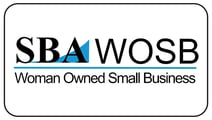 Some of my most vivid memories of life in the corporate world concern clothing.
Some of my most vivid memories of life in the corporate world concern clothing.
One day late in my corporate career, when my metamorphosis from jaunty Lily of the Valley to jaundiced Lily Munster was complete, I was walking down the hall at work dressed in black pants with a black blouse that had tiny yellow polka dots--the last vestiges of colour in my life disappearing like the turned-off picture on an ancient tv screen--when I spied an apparition in the distance. It was my mirror image approaching me, a woman dressed almost exactly the same, although her yellow polka dots were larger, her life force not quite as near extinction.
As soon as she realized she had encountered her sartorial doppelgänger, she darted into the closest office. I never saw Julie in that ensemble again, although we joke about it to this day.
It wasn't long after that hallway encounter that I became reckless with my wardrobe. I once wore one of my husband's white dress shirts with a black necktie and paired it with a black leather skirt and equally aggressive black leather pumps. It was a fashion statement dressed as a profanity. I was the hermaphrodite who had found her other half and was publicly consummating the relationship. At work. The transgression felt delicious.
There's a name for my feeling. No, it's not perversion; it's called embodied cognition, the process whereby we take on the qualities of the clothes that we wear. Our clothes affect the way we see the world and how we behave within it. Embodied cognition tells us that we should dress for the position to which we aspire, but what about companies? Shouldn't employers set dress codes based on the culture to which they aspire?
Can we use the principle of enclothed cognition to address Silicon Valley's diversity problem and help Uber achieve its vision of a diverse and inclusive Uber 2.0? Do clothes make the bro, and therefore have the power to turn a bro into a gentleman? I don't know for sure, but I think one reason why Jeff Jones left Uber was because he had a different philosophy of fashion...

CEO Travis Kalanick has a slightly different style that former Uber president Jeff Jones.
When you consider the role of clothing in creating the palette for a business culture, think of the pope. Even Pope Francis acknowledges the power of earthly fashion. He wears lighter, simpler, more sober and less expensive garments than his predecessors--they call it 'papal athleisure'--and he uses his sartorial style to send a message.
The Argentine pope's call for a Church that is dynamic and “on the move” has translated into a preference for religious clothing that is no longer constrained by heavy fabrics and embellishments. ~ From: Vatican tailors and cobblers try to adapt to Francis's 'papal-athleisure'
The habit of the monks of Silicon Valley is the hoodie, a garment as loose and unrestrained as its culture. The hoodie is a fleece cocoon of comfort that makes its wearer feel coddled in a state of perpetual adolescence. It's an article of clothing that blurs the boundaries between work and life, coding and beer ponging. Hoodies have a magical ability to instantly transform any woman into a SpongeBob: it's a tribal uniform that belongs to men.
I don't think any woman deliberately tries to be unstylish. Same doesn't apply to men. Perhaps some of that is because of social constructs we grow up with as girls. We wear flats to work to flaunt convention. Not hoodies. ~ From: The Subtle Sexism of Hoodies
In Silicon Valley, clothing, like Uber's values statement, can be weaponized. Leather jackets were featured in an absurdist sub-plot in the story of Susan Fowler's very, very strange year at Uber. Women engineers were denied leather jackets because there was an insufficient number of women to get a comparable volume discount to the men. It would not be fair if the women's jackets were more expensive than the men's. That would be inequality.
Rich Armstrong is a coder who has experienced the effect of clothing on culture first hand. When he worked for J.D. Edwards, the dress code came straight from IBM. He had to wear a suit and tie and would look longingly at his coder bros at hipster startups in their ironic t-shirts, jeans and sneakers. Then he had the opportunity to experience life on the bro-side.
J.D. Edwards, with its suits and ties and accompanying aura of professionalism, had the most diverse culture Armstrong ever experienced in tech. His co-workers at the hip software company with the ironic t-shirts was all white, all young, all childless, and mostly male.
If you want to build an inclusive culture, build it around professionalism, boundaries and work-life balance. ~ Rich Armstrong
A significant part of professionalism is looking like a professional, not like someone whose professional and social lives are indistinguishable. Embodied cognition theory tells us that if you look professional you will tend to act like a professional and, because your work clothes aren't the same as your socializing clothes, it won't be so easy to meld your professional and social lives. When it's not expected that you will share the same social interests with your colleagues, everyone does their job and goes home. Diversity is free to flourish.
So what should the Silicon Valley dress code look like? How about shirts with collars and no jeans or sneakers? If it's good enough for dinner time at a Caribbean resort, it should be good enough for Silicon Valley.
Any Italian will tell you that a key to a good look is a fine pair of shoes. Tech CEOs set the sartorial tone for their organizations, and they tend to do it from the ground up. Please lose those expensive sneakers that say I'm still a bro at heart, but I'm a bro with money...
If changing War Room to Peace Room is considered a viable strategy for addressing a toxic culture, so should changing the dress code.
AboutThe Author

Lynne Everatt calls herself a “Writer and Recovering MBA”. She is a weekly contributor on LinkedIn and has been recognized as on of LinkedIn’s top voices for 2015 and 2016.
Lynne formerly was a Globe and Mail Careers columnist and a published author of two books--Emails from the Edge that was nominated for the Stephen Leacock Award for Humour (Insomniac Press, 2006) and Drink Wine and Giggle (The Fig and the Vine, 2013).
![]()



